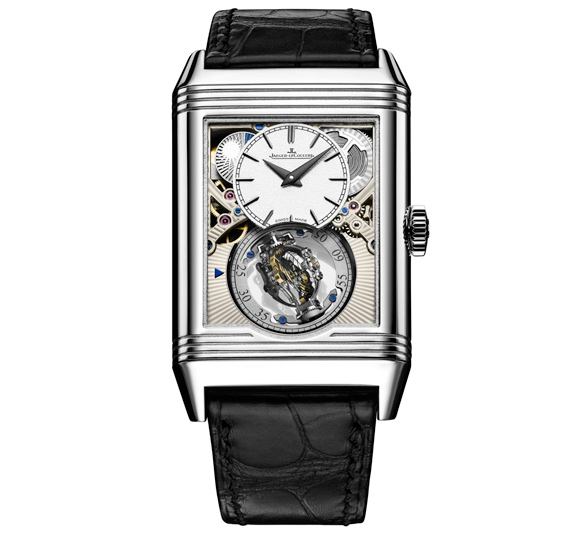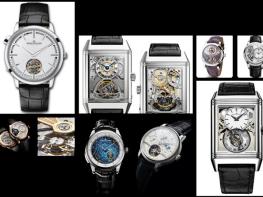The revolution started in 2004, when Jaeger-LeCoultre introduced the Gyrotourbillon 1. It was the first in a whole series of tourbillons to be developed from a blank sheet of paper. Why? “Because we didn’t want to use an existing base calibre,” explains Stéphane Belmont. “Even minute repeater models use base calibres that were developed for quarter repeaters, for example, which means the movement has not been designed from the outset for the function for which it is intended. The original tourbillon was developed for a pocket watch, so the objective with the Gyrotourbillon 1 was to develop a tourbillon specifically for a wristwatch.”
Since the first tourbillons were fitted to pocket watches, they only compensated for the effects of gravity along one axis, because the watch was generally kept in a vertical position in a waistcoat pocket, only being removed when the wearer needed to check the time. A wristwatch, on the other hand, is in permanent motion and is subject to much quicker movements, which is why the first Jaeger-LeCoultre Gyrotourbillon revolved around two axes, an outer one in one minute for the seconds and an inner one in 24 seconds.

This first Gyrotourbillon was the first tourbillon to use a carriage made of aluminium for the ultimate lightweight construction and was released as a limited edition of 75 pieces, like all models in the Hybris Mechanica collection to which it belongs. But it also had a number of other delights, as Stéphane Belmont explains: “The Gyrotourbillon on its own has such a strong identity that people tend to forget that this watch also has an instantaneous retrograde perpetual calendar and a very rare running equation of time hand.”
Master Tourbillon (2006) – Classic, but better
The Master Tourbillon looks like a classic tourbillon, but looks can be deceiving. “We thought at the time that most tourbillons were not necessarily much better in terms of precision than a standard mechanical watch,” explains Stéphane Belmont, “so we wanted to produce a tourbillon that was much more precise than any other”. The resulting movement was the Calibre 978, for which all components had been balanced out from the computer-aided design stage for maximum weight saving. As a result, no gold adjusting screw was needed, which avoided extra weight or imbalance. This movement went on to win the International Timing Competition in 2009.
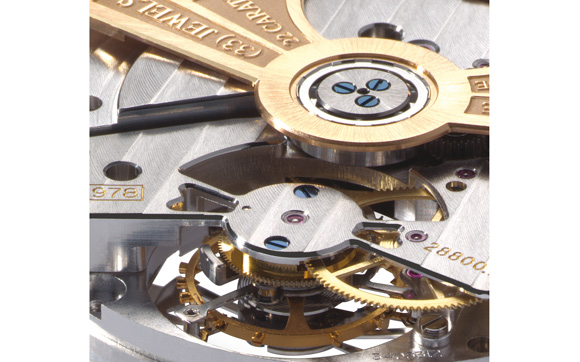
Reverso Gyrotourbillon 2 (2008)
Looking to better a design that was already avant-garde when launched just four years earlier, Jaeger-LeCoultre noted that there was sufficient space left in the movement to incorporate a miniaturised cylindrical balance spring. This type of spring, patented by British watchmaker John Arnold in 1782, had guaranteed the precision of marine chronometers for use in ocean navigation and had two terminal curves to ensure its regular and isochronous development. Its adaptation for use in wristwatches had been abandoned and Jaeger-LeCoultre was the first brand to incorporate such a spring into a wristwatch. In the second iteration of the Gyrotourbillon, the rotation around the inner axis was an even faster 18.75 seconds.
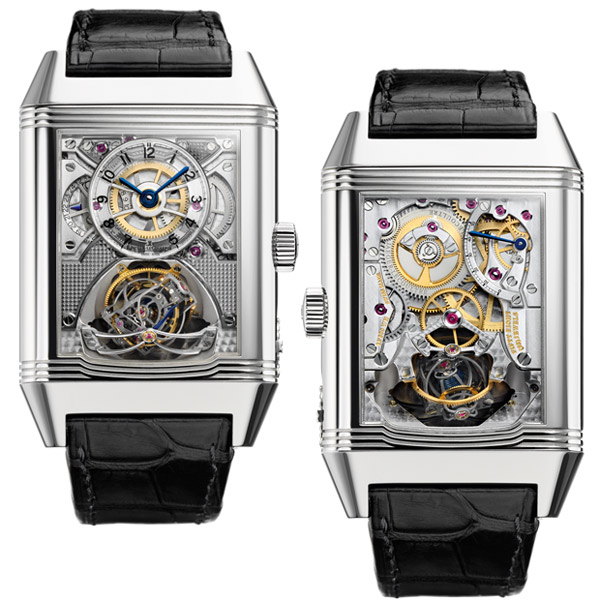
Hybris Mechanica à Grande Sonnerie (2009)
The fact that this model was the first Jaeger-LeCoultre to use a flying tourbillon is possibly one of the least interesting about this watch, which brims with superlatives. With 1472 individual components, it is a candidate for the most complicated wristwatch in existence and boasts among its features a Westminster carillon, grande and petite sonnerie, minute repeater, instantaneous retrograde perpetual calendar and jumping hours and minutes.

Master Grande Tradition Grande Complication (2010)
This was the first wristwatch ever to use a flying orbital tourbillon to indicate sidereal time on a sky chart that is also mounted on ball bearings. A full technical explanation is beyond the scope of this article, but you can find an excellent explanation on the Jaeger-LeCoultre website.

Duomètre Sphérotourbillon Dual-Wing (2012)
The Sphérotourbillon incorporated Jaeger-LeCoultre’s Dual Wing technology, which allows two separate mechanisms to function off the same regulating organ. According to Stéphane Belmont, there were two objectives in developing the Sphérotourbillon, again with precision as the top priority: “We wanted to have an indication to the nearest second, which was not possible with other tourbillons. In most cases, if you stop the tourbillon, you stopped everything. The advantage of the Dual Wing technology is that we can stop the seconds for precision adjustment of the watch while the tourbillon keeps running. We also reduced the angle of inclination of the tourbillon to make the calibre thinner without sacrificing precision.”
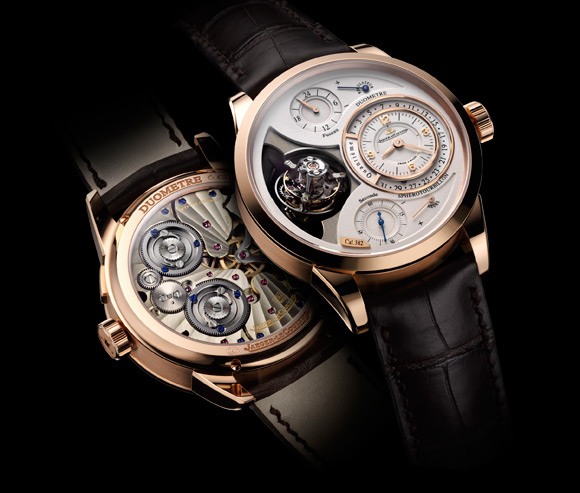
Master Grande Tradition Gyrotourbillon 3 (2013)
Presented as part of the Jubilee collection to celebrate 180 years of Jaeger-LeCoultre, the Master Grande Tradition Gyrotourbillon 3 took the development of the Gyrotourbillon a step further, removing the upper bridge to create a flying tourbillon and using a spherical spring for the first time.
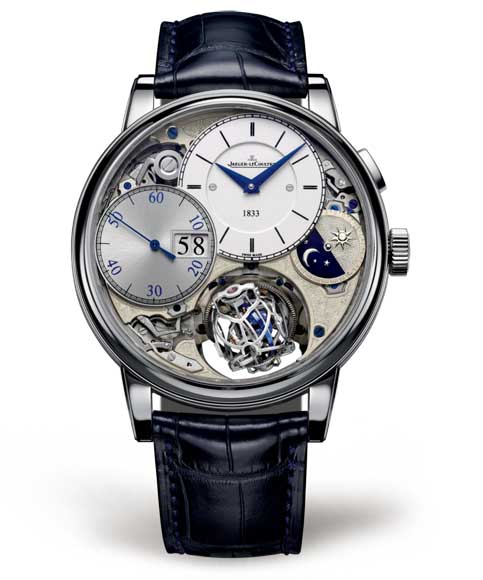
Master Ultra Thin Minute Repeater Flying Tourbillon (2014)
The objective was simple: To produce a grande complication watch that was around half the thickness of a usual grande complication watch. The result is the Master Hybris Mechanica Minute Repeater with Tourbillon, measuring just 7.9mm in thickness. It has a flying tourbillon and, for the first time ever, a “flying” balance – all mounted on ball bearings. It also has a new, patented S-shaped curve on the ultra-thin cylindrical balance spring.

Reverso Tribute Tourbillon (2016)
For the 80th anniversary of the Reverso, Jaeger-LeCoultre integrated a tourbillon movement into the Reverso Classic case. But the point of departure was still a blank sheet of paper. “The Gyrotourbillon remains essentially the same,” explains Stéphane Belmont, “but there is no carriage and there are no bridges, so it looks like the entire tourbillon is levitating in mid air. It is also 30% smaller in terms of volume, notably thanks to our first-ever use of a hemispherical spring.” The inner cage also rotates at the fastest speed ever achieved by the brand, performing a complete revolution in just 10 seconds but still offering a power reserve of 45 hours. Find out more and see our photo gallery.
